Another mini review of the Canon R5. (7 photos)
Earlier this week Canon came out with a new firmware update for the R5 so I chose yesterday to update mine. To do so you need to download the update, copy it to a memory card and then transfer it to your camera.. The R5 has two memory card slots – one for CFexpress Type B cards and the other for UHS-II SD cards. Except for the first few days I had the R5 I’ve always use CFexpress cards, but I have both so I decided to use my SD card for the firmware update.
Well, guess what I found on that SD Card that I haven’t used for so long?
Hundreds of photos that apparently I’d never downloaded, including the following series of seven Belted Kingfisher flight shots that were taken three months ago, on April 24th. They were taken in typical kingfisher habitat so the setting is incredibly busy. But collectively I think they’re excellent evidence of the capabilities of the R5’s autofocus system and the advantages to the bird photographer of shooting full frame when the image file size is as huge as the R5’s (I shoot in Compressed RAW, C-RAW, so the file size is much more manageable, without any noticeable loss of detail).
The following seven images are sequential without any skips.
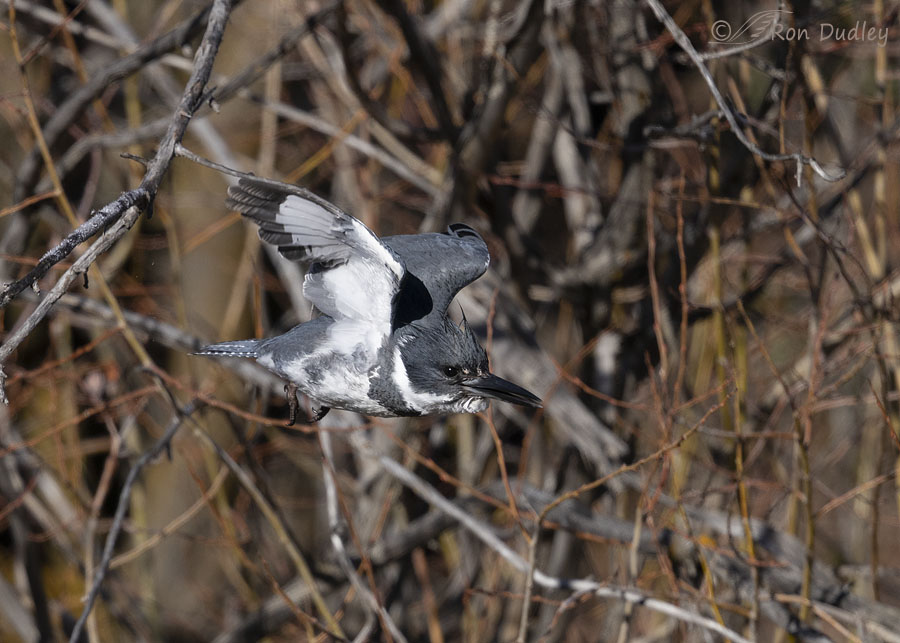
1/5000, f/5.6, ISO 640, Canon R5, Canon EF500mm f/4L IS II USM + 1.4 tc, not baited, set up or called in
This is the first flight shot I got after the kingfisher left the diagonal branch at upper left to dive on a fish.
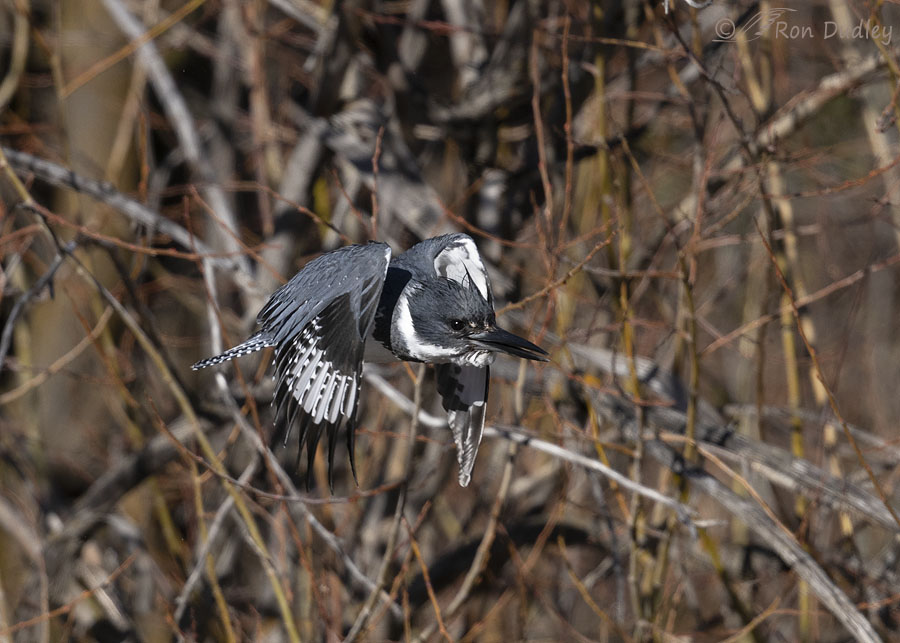
1/5000, f/5.6, ISO 640, Canon R5, Canon EF500mm f/4L IS II USM + 1.4 tc, not baited, set up or called in
To gain speed quickly he turned on his afterburner but only three frames into the dive he…
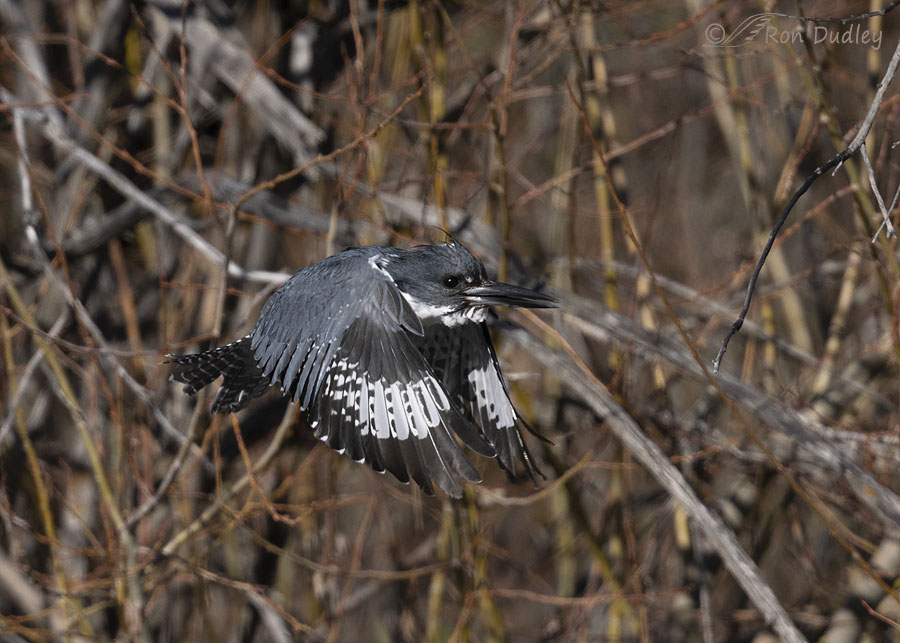
1/6400, f/5.6, ISO 640, Canon R5, Canon EF500mm f/4L IS II USM + 1.4 tc, not baited, set up or called in
began to pull out of the dive and abandon his attempt on the fish. Now his goal was to land on another branch slightly above him and to the right.
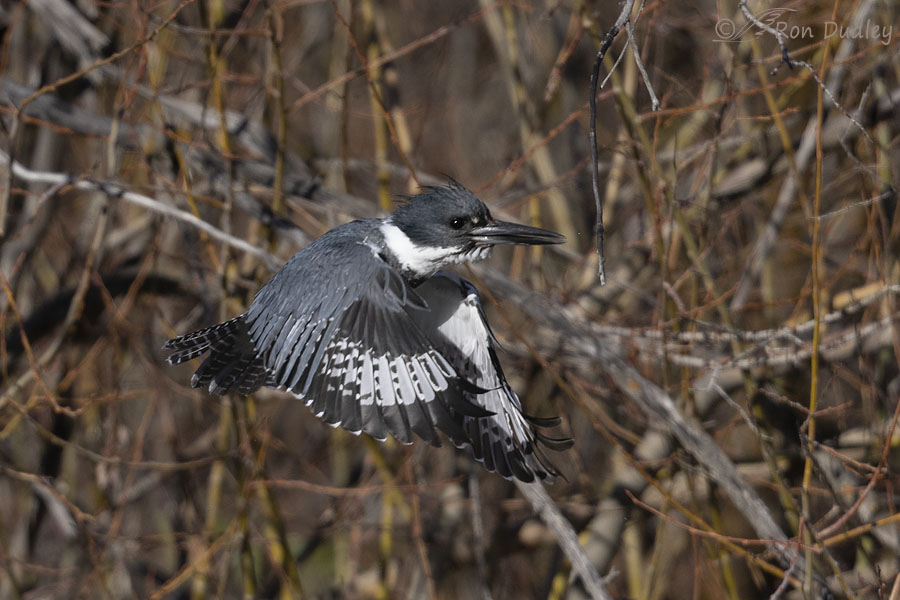
1/6400, f/5.6, ISO 640, Canon R5, Canon EF500mm f/4L IS II USM + 1.4 tc, not baited, set up or called in
Up to this point all my photos of him were sharp but this shot’s a little soft.
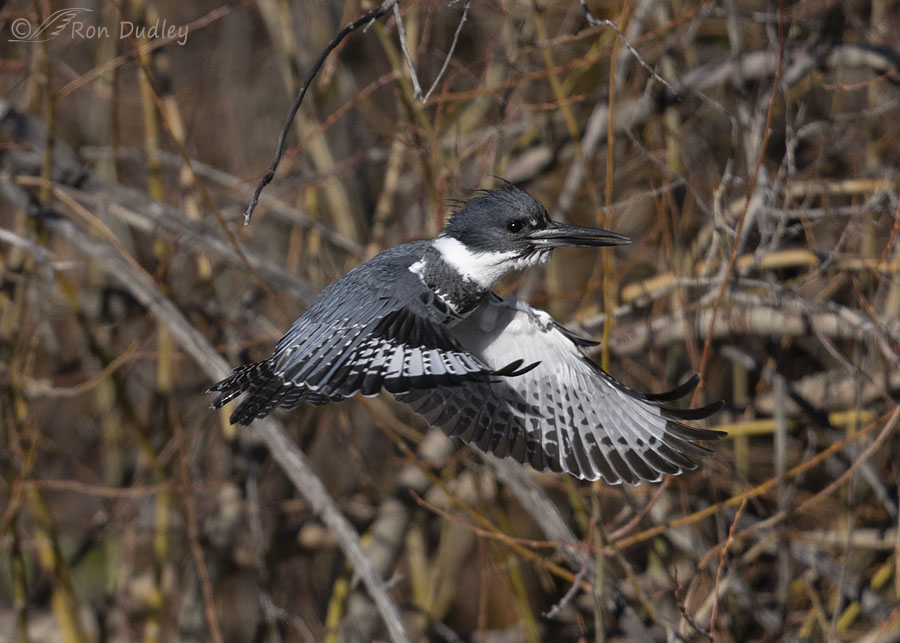
1/6400, f/5.6, ISO 640, Canon R5, Canon EF500mm f/4L IS II USM + 1.4 tc, not baited, set up or called in
However, in the next photo in the burst my active AF point locked onto him again and maintained that lock for…
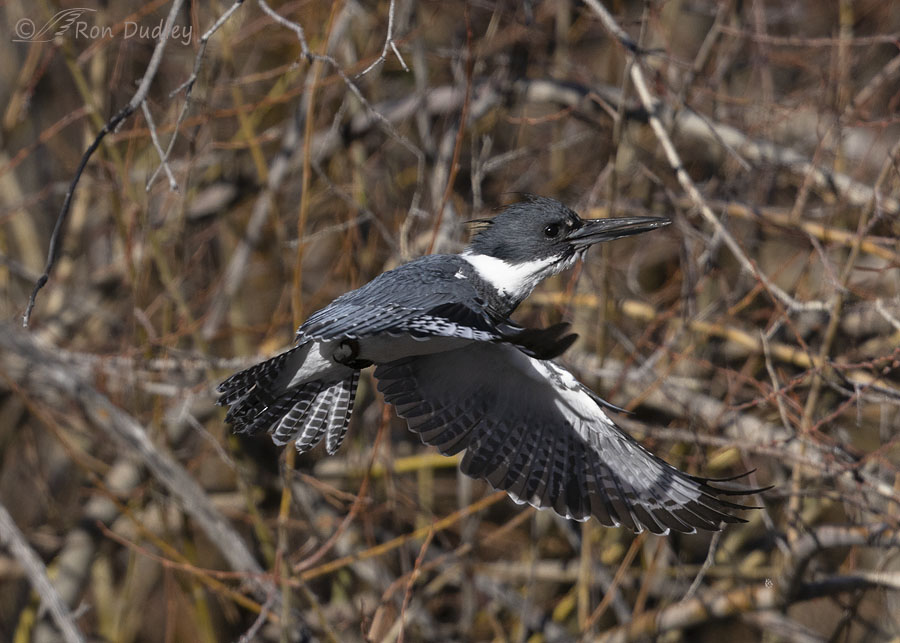
1/6400, f/5.6, ISO 640, Canon R5, Canon EF500mm f/4L IS II USM + 1.4 tc, not baited, set up or called in
one more shot.
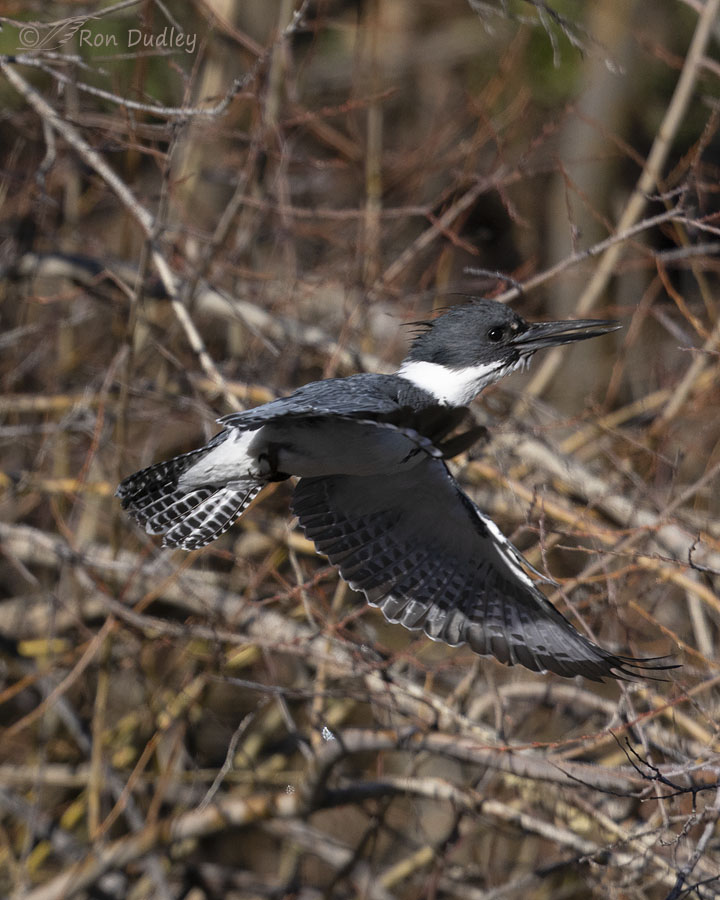
1/6400, f/5.6, ISO 640, Canon R5, Canon EF500mm f/4L IS II USM + 1.4 tc, not baited, set up or called in
I didn’t lose sharp focus again until the kingfisher was so close to the right frame edge I didn’t have enough room there for a horizontal composition, so I had to go vertical. His flight posture in this shot is amazingly similar to what it was in the previous one. In the next shot in the burst everything but his tail was out of frame.
With the kingfisher coming partly toward me, flying erratically, and with the background so close and so busy, if I’d been using my previous camera (the 7D Mark II) I’d have been extremely lucky to get more than one sharp shot of him in flight. Getting this many would have been completely out of the question, at least with me at the controls.
So, to what do I attribute the fact that I got seven sequential photos of the kingfisher in flight that were sharp to reasonably sharp without cutting off any body parts? I think there were three major factors involved and yes, one of them was the skill of the photographer. But I’ll still give the R5 much of the credit. Here’s why:
- In situations like this the R5’s animal/eye detection autofocus is a game changer. In this very difficult shooting situation, the R5 somehow managed to keep my active focus point on the kingfisher’s eye or at least his body. My 7DII certainly couldn’t have done that, not with me pushing the buttons.
- Shooting full frame, instead of cropped frame like the 7DII, gave me a much larger field of view so it was significantly easier to keep the speedy and erratic kingfisher in frame for that many shots. Yes, the bird was small in the original frame but with the 46 MP file size of the R5 I could (and did) crop the images drastically and still have plenty of pixels for good image quality.
Even this long after purchasing the R5 I’m still getting used to some of its quirks but overall I’m a huge fan, especially for birds in flight.
Ron
PS – For those of you who own the R5, don’t forget to install the new Version 1.6.0 firmware update.


Traveling the next few days. Just catching-up.
Nice sequence. Just love the kingfishers. Such a unique bird. Kind of ancient looking with almost unreal proportions; like another favorite bird of mine, the pelican.
The nice thing about these sequence shots is that you give us the opportunity to not only appreciate the beauty of these birds , but to also study the their form and (what flows from that) their functionality, which in itself has an intrinsic beauty.
Thank you!
I do the same thing. I must see ALL THE THINGS on Ron’s blog.
Sensational series Ron, thanks for sharing!
Charlotte Norton
Thanks, Charlotte.
I think I might save up for one of them there R5s!! Excellent photos!
Thanks, Joanne. It’s a big investment but it’s quite the camera.
What a wonderful find – for you and for us.
And hooray for being happy with an expensive decision that you no doubt had a LOT of qualms about.
A lot of qualms is an understatement. Thanks, EC.
Grin. Always look first. Then after you’ve downloaded LOOK AGAIN. 😀 Sometimes the d/l only does so many at a time. Love this series!
Yup, look before you format. You can’t get them back once you’ve done that – at least not without a lot of pain and possibly expense.
A couple of techinical questions if you don’t mind:
Did you take this in burst mode, or whatever it’s called, or did you press the shutter for each photo?
I’m guessing the sequence is less than a full wing flap cycle (again for a lack of a better term). The first photo is wings up and the last is wings not quite half way up again.
In any case, keeping him in focus and well within the frame appears to be a game changer for you, and for us😊
The series was taken in burst mode, Lyle. I was using the mechanical rather than the electronic shutter so I was shooting at 12 frames per second.
Thank goodness you remembered to look! Your camera is amazing.
“Thank goodness you remembered to look”
I damn near didn’t, Nancy. I had my finger on the button to format the card and then thought “Maybe I’d better check to see what’s on it first.”
Remarkable series Ron. The R5 technology is superb and of course the photographer is no slouch. Very envious as a recall all the times I have tried with my camera to get take offs and in flights of our Kingfishers. Their take offs are so explosive and their speeds over short distances are so fast I find it close to impossible with my camera and skills to get decent shots.
Thanks for sharing these.
“Their take offs are so explosive and their speeds over short distances are so fast”
You got that right, Everett. Fish can disappear from the surface so quickly I guess it was essential for kingfishers to develop their explosive takeoff and flight speed.
Great flight shots from buried and forgotten treasure! Happy to hear you are satisfied with your new camera.
Thank you, Brett.
I’m impressed! 🙂 VERY difficult series of shots and R5 and “photographer” did an excellent job of following/capturing the action IMO….. 🙂 Glad the R5 is proving worthy of the angst/$$$ involved in getting it.
Me too, Judy. Both the angst and the $$$ were significant.